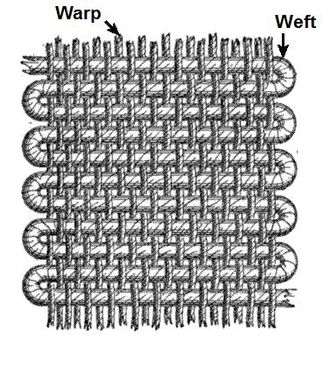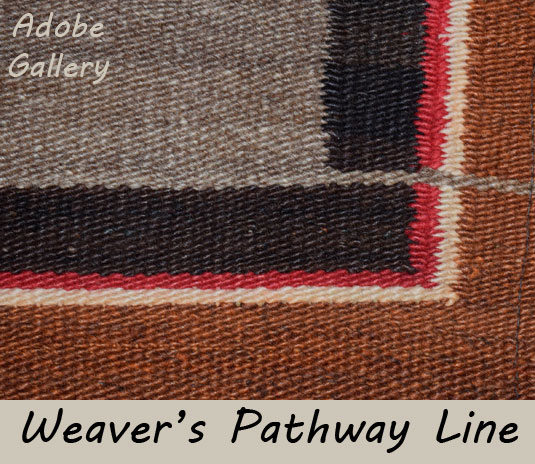Red Mesa Outline Style Navajo Nation Textile [SOLD]
+ Add to my watchlist Forward to Friend
- Category: Navajo Textiles
- Origin: Diné of the Navajo Nation
- Medium: wool, dye
- Size: 51” x 35”
- Item # C4552F SOLD
One normally expects rugs from the Red Mesa area of the Navajo Reservation to be eyedazzler style, with small design elements outlined with thin lines. This weaver followed the style by outlining each color to separate it from its adjoining color, however, she enlarged the design elements to make them bold rather than busy. This dates to c.1920s.
Bold is a very correct description for this textile. It has two large diamond designs in the center, each one hosting a large white cross or plus sign. The white is separated from the grey field by black outlining. Sharing the diamond is a stepped design attached to the diamond’s walls. Again, as expected, the dark orange stepped designs are separated from the grey field by a continuous red line.
Surrounding the two large diamonds are six stepped design patterns. At the four corners of the textile, the arrangement is a grey element, outlined in black, a red and dark orange stepped element with no outline color, and a white stepped item separated by the adjoining black one with a red outline. The two large designs in the middle of the longest sides of the textile, start with a black triangle holding within itself a grey step design and red outlining between the two colors. Along the sides of the triangle is a red stepped element, black outlining, white stepped element, red outlining, merging into the black that connects it to its neighboring design on the opposite side of the textile.
The rug has four borders—the outer one is dark orange, next is a thin while one, then a thin red one, and finally a black one as the inner border. In one corner of the rug, the weaver placed a weaver’s pathway line traversing from the grey stepped element through the three inner borders to the black outer border.
In the corner of the rug that contains a weaver’s pathway line, the weaver deliberately or mistakenly made changes in the dark orange and red stepped designs, by switching yarn from dark orange to red at the point of the last step of the design. Was it an error or a deliberate act? We do not and we will not ever know her intent. That is the charm in such a textile. It leads one to constantly question but with no answer coming forth.

Warp and Weft: In weaving, the weft (sometimes woof) is the term for the thread or yarn which is drawn through, inserted over-and-under, the lengthwise warp yarns that are held in tension on a frame or loom to create cloth. Warp is the lengthwise or longitudinal thread in a roll, while weft is the transverse thread. A single thread of the weft, crossing the warp, is called a pick. Terms do vary (for instance, in North America, the weft is sometimes referred to as the fill or the filling yarn). Each individual warp thread in a fabric is called a warp end or end. The weft is a thread or yarn usually made of spun fibre. The original fibres used were wool, flax or cotton. Today, man-made fibres are often used in weaving. Because the weft does not have to be stretched on a loom in the way that the warp is, it can generally be less strong. The weft is threaded through the warp using a "shuttle", air jets or "rapier grippers." Hand looms were the original weaver's tool, with the shuttle being threaded through alternately raised warps by hand. A useful way of remembering which is warp and which is weft is: 'one of them goes from weft to wight'. -Wikipedia
Condition: good condition with minor soiling
Provenance: this Red Mesa Outline Style Navajo Nation Textile is from the collection of a gentleman from California
Recommended Reading: SOUTHWEST TEXTILES Weavings of the Navajo and Pueblo by Kathleen Whitaker
Relative Links: textiles, Navajo Nation

- Category: Navajo Textiles
- Origin: Diné of the Navajo Nation
- Medium: wool, dye
- Size: 51” x 35”
- Item # C4552F SOLD



